fbq('trackCustom', 'view_shop_gear'); var trackEvent = 'shop_gear'; So you want to make espresso at home? Is…
We love coffee, and we’re pretty sure you do too. When it comes to rich, smooth coffee, you can’t beat an espresso. You may have noticed that making a daily stop at the coffee shop every day can get expensive. Not to mention how nice is it to have a delicious latte without having to leave home. For these reasons and more, we gave ourselves the task of finding the best espresso machine out there. Here’s what we found.
Are you tired of wasting time and money buying your daily dose of caffeine? If so, you really should look into a home espresso machine.
You might worry that it’s too complicated to make espresso at home. But today’s technology makes it easier than ever. You can find espresso machines that pretty much do it all for you. You simply put in fresh water and whole beans and it will deliver a hot, fresh espresso, cappuccino, or latte. It’s like having an on-call barista at home!

Today’s market offers hundreds of styles and models of espresso machines. Here we rounded up some of the Best Espresso Machines to help make your decision process easier.

You get what you pay for (top pick for best espresso machine), and this semi-automatic espresso machine can deliver a coffee-shop quality espresso. With the built-in steam wand, you can also make lattes, cappuccinos, and more. The Barista Express is available in brushed stainless steel or black.
Ease of use is a highlight of this espresso machine. It features an integrated conical burr grinder with an 8-ounce hopper. You can vary the amount and size of the grind to suit your taste and variety of beans. It also includes a tamper. This espresso machine does need to be cleaned regularly, but thanks to the cleaning sensor, the machine will remind you.
The boiler is digitally controlled to pump water at the perfect temperature. It starts at a lower pressure to pre-wet the grinds then gradually builds to a full 15 bars of pressure. This ensures a rich crema on top. You can brew a single or double shot. All of these features combine to earn our designation of the best espresso machine.
Use the manual steam wand to froth or foam your milk. Many coffee enthusiasts love the control over the steaming process. If you're brand new to steaming, it may take a bit of practice to get the angle and depth right.

Rancilio has been making commercial espresso machines since 1927. It also has expanded into the world of the home espresso machine with the same exacting standards.
The Silvia is a semi-automatic espresso machine designed for home use. It's best for the home barista who already knows a bit about making espresso. You have to manually control how long the water comes through the coffee channel. You'll also have to prime the machine.
This is a dream espresso machine for the seasoned barista who wants to make espresso drinks at home. It delivers 11 bars of pressure to produce a shot with a rich crema. The water tank holds 60 ounces of water, so you won't be constantly refilling it. The boiler holds about 12 ounces of water. That's plenty to steam milk and brew your espresso.
A nice feature of this espresso machine is that the top works as a cup warmer. That ensures you'll be drinking a hot espresso. You can also use the hot water dispenser to preheat your cup. Many think that this is the best espresso machine runner-up.

The Gaggia semi-automatic espresso machine is very similar in look and performance to Rancilio's Silvia. It can also deliver the same high quality of espresso as the Silvia, but at a much lower price tag.
Like the Silvia, it helps if you're already familiar with the principles of making a smooth espresso. Luckily, the Gaggia has a feature that can make it easier to make espresso than the Silvia. It is designed to take ESE pods. You won't need to purchase a separate adapter. It also has a faster heat-up time of 5 minutes.
One thing lacking with the Gaggia is a hot water dispenser through the steam wand. You would need to run hot water through the main pump. With only about 3 inches of clearance, this makes making Americanos or hot tea tricky.
Another thing we love about the Gaggia is that it's available in six colors. You can choose from brushed stainless steel, Cherry Red, Classic Blue, Industrial Grey, Polar White, and Thunder Black.

Sleek and sophisticated for an espresso maker at this price point, the De'Longhi 15 Bar Pump Espresso Maker (EC702) is a metallic, lightweight machine that is pump driven and, as the name suggests, has 15 bars of pressure. Manufactured by De'Longhi - a brand with a good reputation for making high quality kitchen machinery - this is one of the best budget espresso machine models on the market right now.
What's cool about this device is that it is compatible with an electric stovetop. If you are one of those people who prefer to brew yourself a nice espresso shot using your electric stove, then this might just be the right machine for you to buy since it offers you that capability.
With this De'Longhi espresso maker, you can brew a single or double shot of espresso, feeling like a pro all the while. You can also brew up a nice latte or cappuccino if you'd like. There is a manual frother that mixes the steam and milk into a deliciously creamy and rich froth, making for remarkably evenly textured drinks and giving you a high degree of customization. This machine features professional 15-bar pressure that delivers high quality results with each and every use. What's more, the adjustable controls let you to modify the settings in order to meet your unique taste preferences.
The De'Longhi machine will consistently brew espresso or cappuccino at the ideal temperature with the use of its two separate thermostats. These two individual thermostats make it so that the water and steam pressure are separately controlled. You also will not have to wait between cups thanks to the Rapid Cappuccino System. This system stays at the optimal temperature, allowing you to simply brew cup after cup without having to wait for the machine to get back up to the ideal temp.
Whenever you need to, simply remove and refill the 1.3-liter water tank. Be sure to clean as needed, but cleaning itself is quick, easy, and painless. You can also choose whether you want to brew grounds or pods due to the design including a patented filter holder.
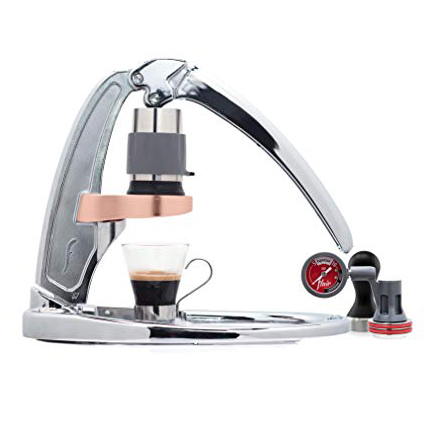
If you love the idea of having hot, fresh espresso anywhere, then you will love the Flair Signature manual espresso machine. No electricity is needed. All you need is hot water.
With this device, you get up close and personal with your espresso. It allows you to fine-tune even the smallest detail. The quality will rival the most expensive semi-automatic espresso machine. It's constructed from cast aluminum and stainless steel, and the company backs it with a 3-year warranty.
Unlike most manual espresso machines, this model comes with a custom pressure gauge. That way you can see exactly how much pressure you are exerting and adjust to the ideal point. The brew head is completely removable, making cleanup a breeze. A cleaner espresso machine assists with longevity. It features a 2-in-1 bottomless portafilter that gives you the option of brewing with a spout or naked.

This espresso machine gets high marks for speed and ease of use. Pop in a capsule, push a button, and out comes coffee. While this brewer has no onboard milk frother, it is often sold in a bundle with an electric Aeroccino milk frother. That means you can craft café-style espresso drinks at home in almost no time. It can be argued that the Vertuo does not make a true espresso, but to most people, it will taste the same.
Unlike many single-serve coffee machines, including the original line of Nespresso, you can get different capsule sizes. Capsule sizes are for espresso (1.35-ounce shot), double espresso (2.7-ounce shot), Gran Lungo (5-ounce coffee), Intenso (8-ounce coffee), and Alto (14-ounce coffee). The machine automatically detects what type of capsule was inserted and uses the corresponding amount of water.
This machine automatically ejects the used capsule. The used-capsule container can hold 13 of the largest size capsule. The Nespresso Vertuo automatically shuts off after nine minutes. It also has a descaling alert to remind you when to do maintenance.
The biggest drawback is that you can't use your own freshly-ground coffee. This problem is true for most single-serve type brewers. If you have a particular coffee or roaster you love, you might be better off with a different option.

Wacaco is all about portable espresso makers. The Minipresso is their original, and it just might be the best small espresso machine out there. It's also the first handheld, piston-driven espresso machine. It takes up a tiny amount of space in your backpack or luggage, so you can have espresso everywhere you go. Wacaco is the best espresso machine for when you are on the go!
The brewer holds about 2.4 ounces of water and it can hold 8 grams of coffee, which is just under two teaspoons. You need to use a super-fine grind. After adding coffee and water, just start pumping. Soon you'll have a lovely shot of espresso.
A scoop and cup are included with the Minipresso. Everything packs into a bullet-shaped package under 7 inches long! While you can use this espresso machine at home, we're not sure you would want to. It does take some effort to get the pressure up, but probably less than you would use for a bicycle pump. We wouldn't recommend it for everyday use, but for road trips or outdoor adventures, it's perfect.

Make coffee like the Italians with Bialetti's Moka Pot Express. This is the original Moka pot design from 1933. It sports the iconic mustaches man which was designed in 1953.
While not a true espresso, the coffee this stovetop brewer makes is close enough that we wanted to include it. This simple brewer works on virtually any type of stove. You'll want to use a medium-fine grind, about halfway between the size for an automatic drip maker and an espresso machine.
You can find this Moka pot in a range of sizes, but the most common are 3-, 6-, 9-, and 12-cups. A 6-cup Moka pot is perfect for two people. Keep in mind that "cup" is referring to a 1.4-ounce shot. Because it does not require electricity, the Moka Pot Express can be taken camping and used on a camp stove.
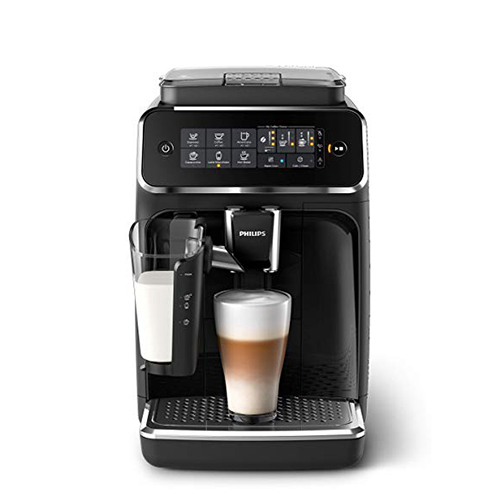
You get a lot of bang for the buck with this super-automatic espresso machine. All you do is put coffee beans and water in the machine. No measuring, no grinding, no mess. With the touch of a button, it can deliver five different drinks: espresso (single or double), coffee (single or double), Americano (single or double), cappuccino, and latte. It can also deliver straight hot water.
You still have the ability to customize these drinks to get the flavor profile you love. Both aroma and temperature have three settings. You can also choose from 12 grinder settings. It offers adjustable coffee and milk length. The spout can fit cups up to 5.7 inches tall.
Keeping your espresso machine maintained is easy. The LatteGo offers a removable brew group. It also offers an AquaClean water filter and guided descaling. A water hardness test strip is included.

This semi-automatic espresso machine is a workhorse. The streamlined, futuristic design makes a statement on any counter. The stainless-steel frame and professional-grade parts mean it can stand up to small-volume commercial use. Yet this espresso machine is easy to use and priced for the home espresso maker.
The body of the machine is polished stainless steel. The top, back, and drip tray are made from ABS plastic, and that is available in black or red. The generous water tank will allow you to make drink after drink without stopping to refill. It also has an option to hard-plumb this espresso machine.
The Oscar II is noted for its four-hole, high-pressure steam wand. You may need to get used to it, but then you'll have perfectly frothed and foamed milk in almost no time. And better yet, you can froth and brew at the same time.
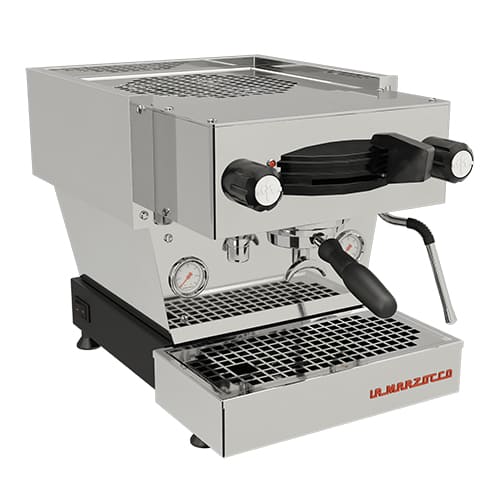
If you're an experienced barista who wants the same high-quality espresso at home as you get from a commercial espresso machine, then the La Marzocco Lineo Mini is for you. The dual boiler provides plenty of pressure for pulling a shot and steaming milk. Ideal espresso maker!
You use manual knobs to control the timing of your shot. The machine is programmed to do a one-second, low-pressure pre-infusion cycle. You cannot control the flow rate, but you do control timing. The temperature is PID regulated.
For gadget-heads, you can use a mobile app to control basic functions. The app can track how many shots have been pulled. You'll also find how-to guides and FAQs.
Adding to the fun of this machine, you can get it in four colors. It comes in stainless steel, white, black, or red. This is one of the best-performing home brewing machines available.
La Marzocco Linea Mini is very expensive, but if you want the best espresso machine this one is the way to go.

The price of espresso machines ranges from under $50 to thousands of dollars. Of course, the more features you have, the more expensive the machine will be. Here we’ll break down the four different types of espresso makers so you can make an informed choice.
Manual espresso machines use the principles of physics to exert much more force than an unaided human can. They require no electricity and tend to be less bulky. This makes them ideal for travel, especially traveling off the grid. Of course, they won’t include any type of milk frother, but they tend to be quite easy to use. These are usually less than $100, but some may cost a few hundred dollars.
With semi-automatic espresso machines, you will grind and load the coffee. You also control the timing of the pull. So, what is automated? The machine regulates the water temperature and pressure. These espresso machines may or may not have a milk frother. If it does have a milk frother, it will usually be a manual steam wand.
These are the most popular home espresso machines. They tend to be affordable and can make excellent espressos, cappuccinos, and lattes. You can find a budget semi-automatic espresso machine for a couple of hundred dollars, or less if it doesn’t include a milk frother. But higher-end machines can be well over $1,000.
The main difference with fully automatic espresso machines is that the timing of the pull is handled for you. You just press a button and the machine will deliver what you want, be it an Americano, double espresso, or cappuccino. These usually have some method for frothing milk. Some might have a manual frothing wand while others will have an integrated milk frothing system.
These are great machines for people who don’t want to babysit the espresso machine. Press the button and walk away. Then come back to get your steaming drink. Of course, the price will be more expensive than for a semi-automatic, so you have to balance convenience with the price.
This category probably has the biggest price range. Those that don’t include a milk frother may just be two or three hundred dollars. Like the semi-automatic, higher-end fully automatic espresso machines can be well over $1,000.
These espresso machines do absolutely everything for you. They are usually fully enclosed units that grind, tamp, and pull the espresso shot as well as deliver frothed milk into the cup. As the ultimate in luxury, these usually start around $500 or $600. The price can jump to a couple thousand dollars or more for premium models from well-established brands.

Just like cars and clothes, different brands of espresso machines tend to have certain characteristics. Here we’ll break down some of the main home espresso brands and what they’re known for. The following list can help you tailor your search to specific brands that match your needs.
Based in Australia, Breville has been offering fine small kitchen appliances for many decades. This brand focuses on reliable machines at reasonable price points. It offers a range of the best espresso machines in the mid-to-high-end range. Breville also makes machines specifically for Nespresso.
The De’Longhi brand was born in Italy over 100 years ago. Besides coffee and espresso machines, it offers a large range of kitchen and home comfort appliances. The brand tends towards high-end machines in the upper end of the price range. It also offers some affordable, simple, semi-automatic machines. De’Longhi also makes machines specifically for Nespresso.
Rancilio was founded in Italy back in 1927. They focus exclusively on espresso machines and high-end grinders. They primarily offer sturdy commercial machines, but also have the Silvio and Silvio Pro for home brewers. You can expect to pay close to $1,000, but the quality is undeniable and the espresso machine will last for a very long time.
Achille Gaggia filed a patent for a novel espresso machine that utilized the force of hot water. The Gaggia company name was first registered in 1948. It has been making home and commercial espresso makers ever since. These are high-end, precision machines, and the price tag reflects that. But Gaggia machines are known to last a lifetime. A well-deserved place in the Best Espresso Machines list.
While you might think of the Keurig as the original single-serve coffee maker, Nespresso was actually there first. The company was founded in Switzerland. This company cares about the environment and sustainability. It offers a recycling program for its aluminum capsules.
Nespresso opened a manufacturing facility in Switzerland in 2015 that is LEED-certified by Green Business Certification, Inc. Nespresso offers fully- and super-automated espresso machines for convenience and ease of use. Many of their machines are made by Breville or De’Longhi and tend to be in the low- to mid-price range.
It seems almost sacrilegious to talk about coffee maker brands without talking about Mr. Coffee. It was the original home coffee brewer. While this brand didn’t make our list as the best espresso machine, it is worth mentioning. These machines are best for the budget-conscious.
Mr. Coffee offers a range of espresso makers from semi- to super-automatic at bargain prices. While the true connoisseur may opt for a top-end brand, these make good, reliable home espresso machines for the average consumer.
With such a staggering range of prices and features, how do you know which one is right for you? Here we’ll explain some of the different features available and what to look for.
Espresso machines have three main ways of controlling temperature: PID, thermostat, or pressure-stat (pstat). PID, which stands for Proportional, Integral, Derivative, is the newest and most accurate way to maintain a consistent temperature. Water temperature is an extremely important factor for making good, aromatic espresso, so temperature stability is important.
Thermostats and pstats work by turning on the heating element when the temperature (or pressure) falls below a certain level. A PID works by detecting when the hot water tap is opened. Through advanced technology, it triggers micro-cycles of the heating element to counteract the flow of cold water coming into the system. It prevents the cooling of water instead of being triggered by the colder water.
Water tank capacity mainly has to do with how often you’ll have to refill the tank. This may or may not be important to you. More importantly, might be the boiler capacity. If you plan on making several drinks in a row, you might want to choose a machine that has a larger boiler capacity. This means you won’t have to wait for the water to heat up for each shot.
Higher-end machines will often have a dual boiler. This means that you have one boiler for making espresso, and another for generating steam. Because you need the water much hotter for steaming milk, a dual boiler is helpful. They also allow you to steam your milk while pulling the shot. A machine with a double boiler is also a good idea if you’ll be using hot water often.
Interested in lattes, mochas, and cappuccinos? Many, but not all, machines come with a frothing wand. You may have to experiment a bit with the angle and depth of the frothing tip, but it’s pretty easy to learn. If you want to make latte art, you’ll want a machine with a good quality wand. Other machines include an integrated milk frother. Unfortunately, these don’t usually create a fine enough micro-foam to create latte are.
Some machines can dispense hot water via the steam wand. Others can only deliver hot water through the espresso spout. Either way, you get hot water, but typically hot water through the steam wand will be hotter. It also won’t have any coffee taste or aroma. If you regularly want hot water for tea, oatmeal, instant soup, etc., you may want to look for a machine with an actual hot water dispenser.
Ask yourself, when it comes to coffee, how fussy am I? Different beans may require slightly different temperatures, pressure, and pull time. Some people are fine with a varying quality of their espresso. Others will only drink espresso crafted by expert baristas. If you’re in the second category, you’ll want a machine with a lot of customization options. This lets you fine-tune your drink to your exacting standards.
When you’re looking at investing in an espresso machine, be honest with yourself about your current skill and your willingness to learn. If you don’t want to invest in a good coffee grinder and don’t care about how to get the perfect foam, then going with something like a Nespresso could be your best option. If you are already familiar with the art and science of espresso or are willing to learn, then going with a manual or semi-automatic machine makes sense. In general, you’ll get a better espresso with the less-automatic espresso machines.
Aren’t all portafilters the same? The answer is a resounding no!
First, what is a portafilter? This critical piece of equipment has two parts. The main part is the handle that includes the filter basket holder. The second part is the actual filter basket. Each of these parts has two main categories.
First, we’ll talk about the handle with the basket holder. These might be spouted or bottomless, also called naked. With a bottomless portafilter, all you have is a handle and a ring. Bottomless portafilters are becoming more popular. Some like to see how the espresso is being extracted. This might help them diagnose problems such as irregular grinds. Others don’t think it’s necessary.
Now about the filter basket. There are two main types: pressurized and non-pressurized. A pressurized filter basket, also called a dual-walled basket, has a false bottom. From the top, you see a bunch of holes. From the bottom, there is just a single hole.
Most beginners will be better off with a pressurized filter basket. This can help correct problems like uneven grind due to a low-quality grinder. If you plan to use ESE pods, you will probably need a pressurized basket, and these are usually included with your lower-end machines.
But there are benefits of a non-pressurized basket. These give you a little more control over the end product. You can also take it a step further and go for a precision filter basket. These are carefully machined and provide more even extraction. A side benefit is that they are easier to clean.
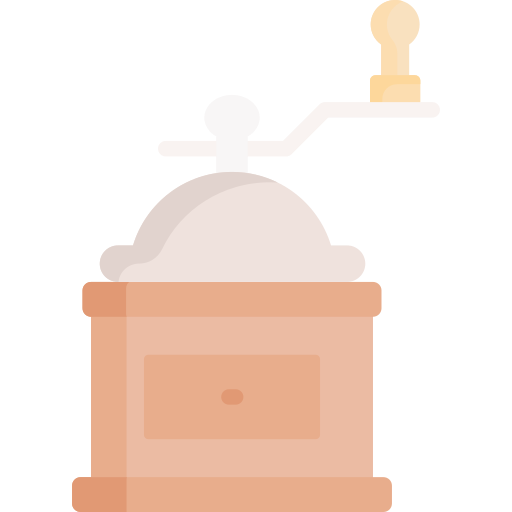
Perhaps the two most important things for making great tasting coffee, regardless of method, are the bean itself and how it is ground. Espresso machines are unforgiving when it comes to the size and uniformity of grind.
If you have too large a grind for your machine, the espresso will be weak or sour. If your grind is too fine, the espresso could be over-extracted, bitter, and might clog the machine. For the most uniform grind, use a conical ceramic burr grinder.
Why a burr grinder? Your cheap grinders are usually blade grinders. With these, you run into two problems. First, the cutting action can actually heat up the grounds which will compromise the taste of your coffee. But most importantly, you can’t control the size or uniformity of the grind. If cost is a factor, you can find inexpensive manual burr grinders.
With a high-end burr grinder, you can set the grind size. As the beans flow through the grinder, they reach the pre-set size and fall through. You can achieve the exact same grind size every time to produce superior coffee time after time.
Some upper-end espresso machines come with a built-in grinder. These are long-lasting and produce a uniform grind size. If the machine you’re looking at does not include a grinder, please plan on purchasing a high-quality burr grinder. Even if your machine does include a grinder, you might still want to purchase one. Some built-in grinders are not the best.
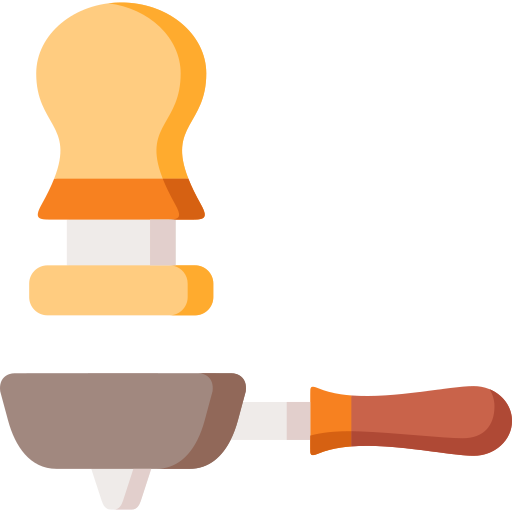
Most espresso machines come with everything you’ll need you. While a good burr grinder is the most important accessory, here are some others you may wish to purchase.ic burr grinder.
Many espresso machines come with a plastic tamper. These can do the job adequately. But you may find that a stainless-steel tamper helps you create a more even, smooth puck.
If you plan on making lattes and cappuccinos, a stainless-steel steaming pitcher is an important piece of equipment. With these, you can get the precise angle of the frothing tip to the surface of the milk. Also, if you plan on making latte art, you need a separate container to froth the milk before pouring it into the espresso.
When we say “high-quality,” we’re talking about the durability of the frame, parts, precision of heating, and amount of pressure. Of course, the bottom line is that a high-quality machine can consistently make a rich, aromatic shot of espresso.
Yes! A Breville espresso machine can last ten years or more with proper care. Things like a sturdy, reliable, consistent boiler can make the cost go up. Our top pick for best espresso machine! However, when you compare the initial cost to an $8 or $10 coffee shop drink every day over 10 years, which would really cost less?
You can find a machine for around $100, but it won’t give you consistent, quality results. In general, you can find a good home espresso machine for between $500 and $1000. It really depends on how automated you want it or how much control you need. Note the best espresso machine for home use will go over $1000.
A durable machine will be made from durable parts, which are usually more expensive. Remember that an espresso machine is handling a high amount of pressure. You want a machine that will be reliable.
Espresso is a concentrated shot of coffee, so the taste is much stronger than a regular coffee. However, per serving, espresso has less caffeine than most other brewing methods.
A portafilter is the filter basket the grinds go into along with the device that holds the basket in the machine.
This really depends on the quality. Finely made Italian machines can last 10, 20, or more years. Cheaply made plastic makers might only last a couple of years. When looking at initial cost, factor in if this is a once-in-a-lifetime purchase or something you’ll need to replace often. A higher-end machine may be less expensive in the long run.
For espresso, you want the temperature around 195 degrees Fahrenheit. The pressure recommendation is for 9 bars.
This depends on personal preference. In general, a medium to medium-dark roast is good. A roast that is too dark tends to be oily, and this can clog your machine. Expert roasters will test many beans to find which ones work best for espresso.
Truly there is no single best home espresso machine for everyone, but there has to be a winner. We feel that the overall best espresso machine is the Breville Barista Express Espresso Machine. It features PID temperature control and delivers a full 15 bars of pressure. We also like the features such as a built-in conical burr grinder that delivers the grinds directly to the portafilter. It has a generous 67-ounce water tank and the stainless-steel finish adds a refined touch to any kitchen.
Our runner-up for best espresso machine is the Rancilio Silvia espresso machine. This is a commercial-grade machine designed for home use. It can deliver excellent espresso, but the look is rather industrial. Also, it’s a bit more expensive than the Barista Express. Still, you won’t regret the price tag when you get many years of service delivering coffee-shop quality espresso.
For someone just starting out in the world of home espresso, you might like the Gaggia Classic Pro. It has a streamlined design and is easy to use. It still offers 15 bars of pressure and has an impressive 72-ounce water tank. Another option for beginners in a fully automatic machine such as the Nespresso Vertuo or the Philips 3200 Series Fully Automatic Espresso LatteGo.
If budget is the top priority, we recommend the De’Longhi 15 Bar EC702. You’ll get a top-level stainless-steel machine for just a few hundred dollars. If you are a bargain basement hunter, you might go for a manual espresso machine like the WACACO Minipresso Portable Espresso Machine. This little device is also the most portable on our list. Another cost-saving option is to go with a stovetop espresso machine like the Bialetti Moka Pot Express.
Whichever If money is no object, you can opt for the Nuova Simonelli Oscar II Espresso Machine. This is a true competitor for the best espresso machine for home with its sleek design and simple push-button operation. But it will set you back over $1000. For the most serious and experienced home barista, you can consider the La Marzocco Linea Mini, but that price tag is several thousand dollars.
So, as you see, you have many options when looking for an espresso machine. Whichever one you choose, just remember the basics: good water, good beans, and good grind are all necessary for the perfect espresso.
